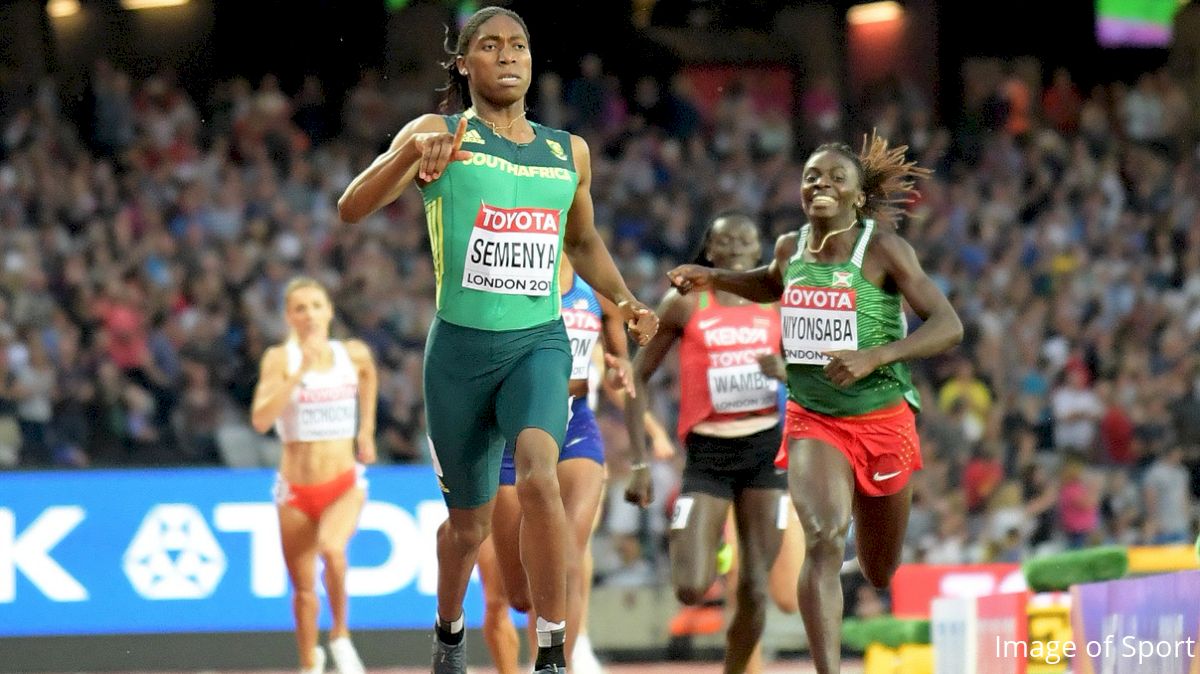New IAAF Rule: Caster Semenya Can Take Hormones, Or Compete As A Man
New IAAF Rule: Caster Semenya Can Take Hormones, Or Compete As A Man
The IAAF issued a ruling this week that female athletes with higher-than-normal naturally occurring testosterone levels must undergo hormone therapy.

The IAAF released new gender eligibility guidelines this week that ban intersex athletes from competing in middle-distance events from the 400m to the mile in international competition unless they artificially reduce their naturally occurring testosterone through hormone therapy.
Athletes who do not wish to undergo hormone treatments but want to compete in middle-distance races have the option of competing against men, or in a separate intersex category—an option which is not currently offered at any international championships.
Female-identifying athletes with "Difference of Sexual Development (DSD)"—as coined by the IAAF—are also allowed to switch events without changing their body chemistry, say, for instance, to the steeplechase or the 5K.
The IAAF defines athletes with DSD as any female with blood testosterone levels equal to or greater than 5 nmol/L. According to the organization's press release, most women's naturally occurring testosterone level is 0.12 to 1.79 nmol/L, while the typical male range is 7.7 to 29.4 nmol/L.
The ruling seems to target the hyperandrogenic Caster Semenya of South Africa, who is essentially unbeatable in the 800m against women when allowed to compete at her naturally occurring hormone levels. She won the first of five global titles as an 18-year-old in 2009 and even when required to undergo hormone therapy after the IAAF first introduced a testosterone limit in 2011, still captured Olympic silver at the 2012 London Games. (The medal was later upgraded to gold after Olympic champion Mariya Sarinova of Russia was found to be doping.)
Athletics officials have made multiple attempts over the last decade to stop Caster Semenya from running. This has been her response pic.twitter.com/nS79Z3GUpf
— Wesley Botton (@wesbotton) April 25, 2018
???⚡?? https://t.co/0mkbRu7DJI
— Caster Semenya (@caster800m) April 26, 2018
An IAAF study published last summer found that elite female athletes with above-average testosterone levels enjoyed an advantage in the hammer throw and pole vault equal to that of 400m, 400m hurdles, and 800m runners, yet the IAAF's new rules do not include any sanction for the field events.
That study also did not mention related findings in the 1500m or mile, both of which are now subject to testosterone regulations.
The inclusion of the 1500m and mile make the new gender rules even more skewed towards eliminating Semenya from international competition, as last summer marked the 27-year-old's first global championship appearance in the 1500m.
It's worth noting that Semenya is not nearly as dominant in the 1500m as she is the 800m, and managed just the bronze medal in the 2017 world final behind Faith Kipyegon of Kenya and Jenny Simpson of the United States.
The new rules will take effect on November 1 of this year.
— Caster Semenya (@caster800m) April 26, 2018